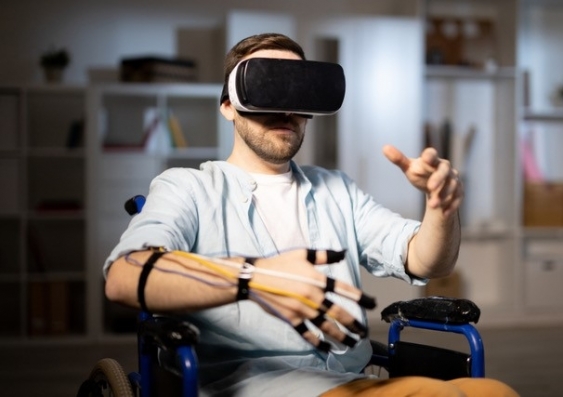Pain research using virtual reality receives $5m from the US Department of Defence
A researcher from UNSW Sydney and NeuRA will undertake research to investigate whether virtual reality can ease pain following spinal cord injury.
A researcher from UNSW Sydney and NeuRA will undertake research to investigate whether virtual reality can ease pain following spinal cord injury.

Yolande Hutchinson
UNSW Sydney External Engagement
0420 845 023
y.hutchinson@unsw.edu.au
Research co-led by UNSW Sydney and Neuroscience Research Australia (NeuRA) has been awarded $5 million for a project that will use virtual reality to ease nerve-related pain following spinal cord injury.
Granted by the US Department of Defense, the funding will enable researchers to assess whether a novel virtual reality walking intervention can effectively reduce spinal cord injury neuropathic pain.
Neuropathic pain affects approximately 60 per cent of people with spinal cord injury and is described as burning, sharp and unremitting.
In addition to being unbearable, neuropathic pain rarely responds to medication or alternative treatments. Patients that do choose drugs treatments can also experience negative side effects, such as toxicity and addiction.
The project will be led by pain expert, Associate Professor Sylvia Gustin from NeuRA and UNSW School of Psychology, as well as Associate Professor Zina Trost from Virginia Commonwealth University. The project builds on 12 years of research pioneered by A/Prof. Gustin, on spinal cord injury neuropathic pain at NeuRA.
“Neuropathic pain is similar to phantom limb pain, where someone with an amputated leg, for example, feels pain in the leg that isn’t there,” said A/Prof. Gustin.
This new and non-invasive intervention works by targeting the neurochemical change in these areas, including the thalamus and sensorimotor cortex, which is where spinal cord injury neuropathic pain stems from.

Associate Professor Sylvia Gustin.
“We know that spinal cord injury neuropathic pain is underpinned by alterations in the areas of the brain that process movement and sensation,” said A/Prof. Gustin.
“Our cutting-edge research uses virtual reality to facilitate an immersive walking experience that can reactivate the brain’s sensorimotor signals, and thereby ease the pain these people are in,” she said.
This is the first-ever study to examine the underlying brain processes associated with treatment and pain recovery, and the preliminary results are strong.
“Participants are reacting remarkably to this in our pilot testing and the gaming component makes it really fun,” said A/Prof. Gustin.
If the trial continues to validate these findings, and successfully ease spinal cord injury neuropathic pain, this research could also inform efforts to prevent rather than relieve spinal cord injury neuropathic pain.
“Rather than treating spinal cord injury neuropathic pain, and hence phantom pain, we could potentially prevent it altogether,” said A/Prof. Gustin.